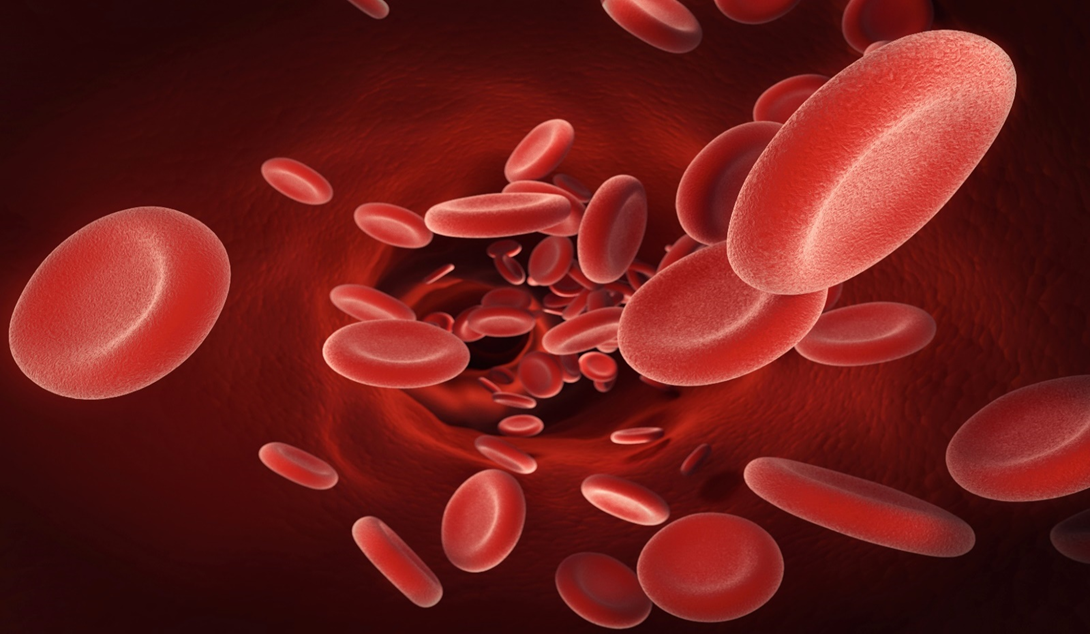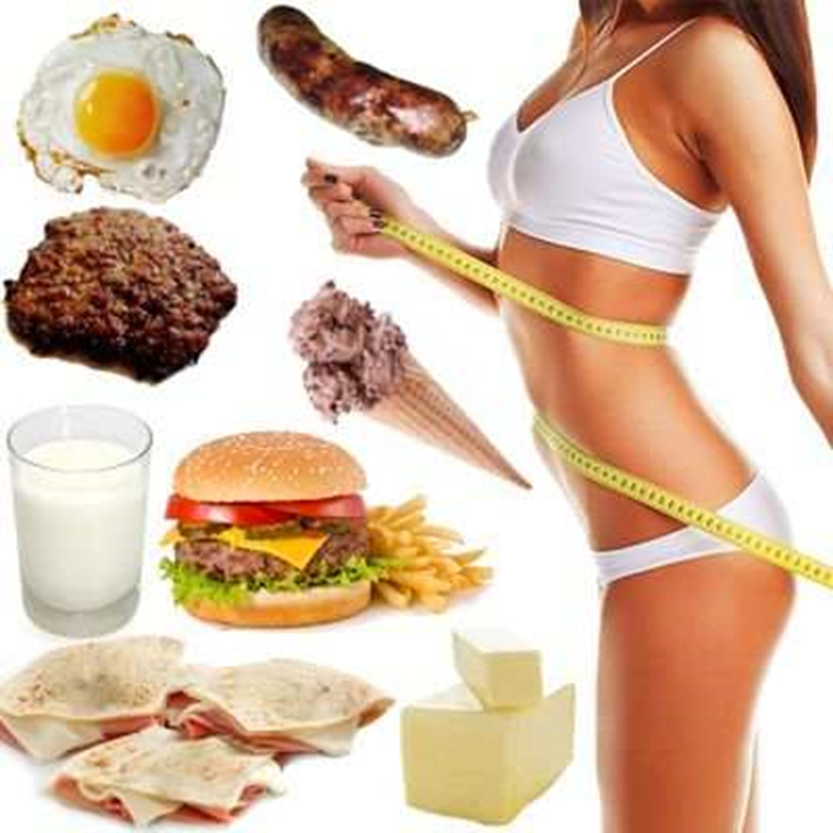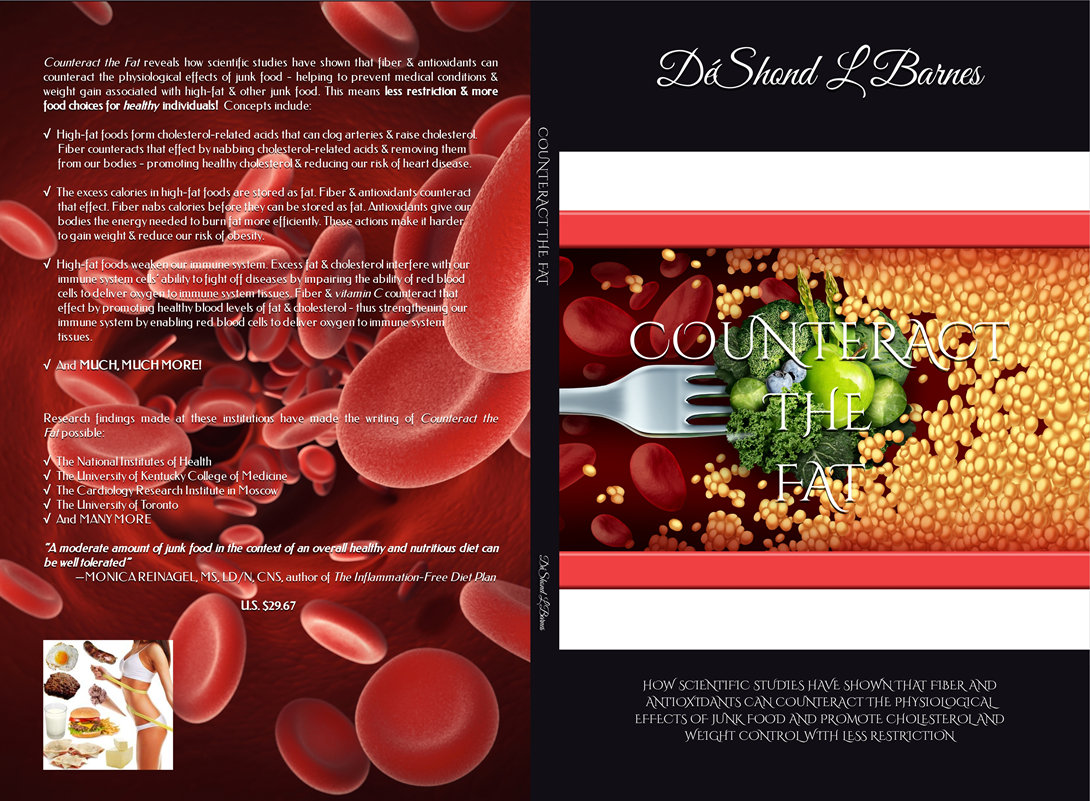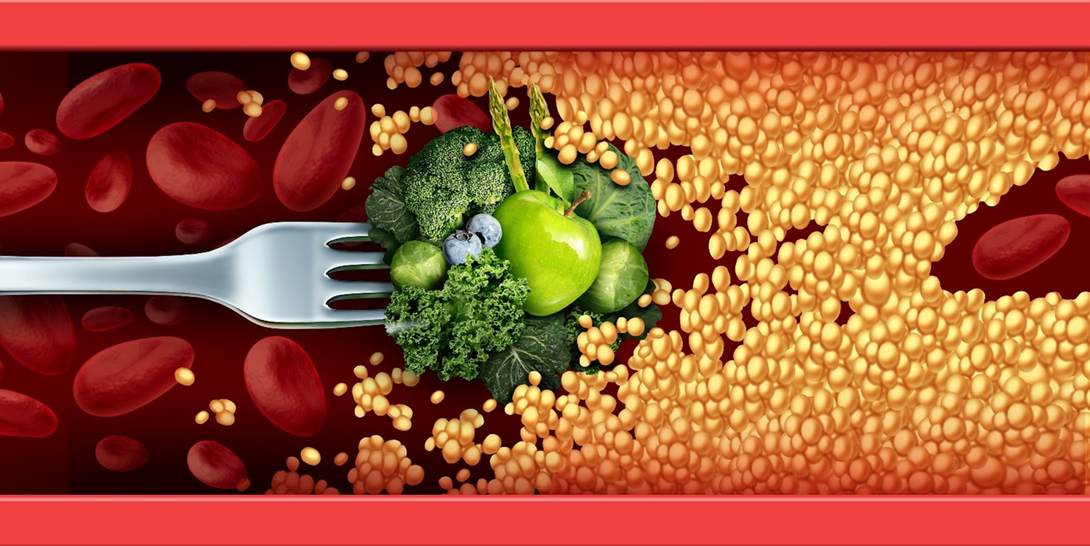By DéShond L Barnes
Junk food is so loved by many of us. What is not loved are the associated medical conditions and weight gain. Over time, scientific studies have been conducted at various institutions across America and abroad. These studies have indicated that fiber and antioxidants can mitigate the health risks associated with junk food by counteracting the physiological effects of high-fat and other junk food. This does not mean that unlimited consumption of junk food without consequences is now possible. What it does mean is greater freedom, less restriction, and a wider variety of food choices forhealthyindividuals. Such groundbreaking research findings include the following:
- High-fat foods produce cholesterol-related acids that can clog arteries and raise cholesterol levels — opening the door to heart disease. Scientists have identified a special type of soluble fiber known as beta glucans that can counteract that effect. According to scientists, beta glucans can reduce the absorption of dietary fats and control cholesterol levels all by themselves, even in a diet containing moderate amounts of saturated fat and cholesterol. Scientists have reported that beta glucans nab cholesterol-related acids produced by dietary fats — ushering them out of our bodies before they can ravage our heart and arteries and thus lower our risk of heart disease.

- The excess calories in high-fat foods are absorbed by our bodies and stored as fat, and can cause us to gain weight — opening the door to obesity. Both fiber and antioxidants can counteract that effect. Scientists have reported that fiber helps control weight by reducing the amount of calories our bodies absorb. It does that by nabbing calories — speeding them through our digestive system before they can be absorbed and stored as fat. Scientists have also reported that antioxidants help control weight by providing our bodies with the energy needed to burn fat more efficiently. These actions make it more difficult for us to gain weight and thus lower our risk of obesity.

- Deep-fried fatty foods can form oxidized lipids that can damage cells and the lining of the blood vessels — opening the door to heart disease. Antioxidants can counteract that effect. Scientists have reported that antioxidants fight heart disease by inhibiting the formation of oxidized lipids — thus inhibiting damage to cells and the lining of the blood vessels and thus lowering our risk of heart disease.
- Hot dogs, bacon, sausages, and other tasty processed meats contain nitrites. Over time, nitrites can open the door to pancreatic cancer by breaking down and converting to nitrosamines. Vitamins C and E can counteract that effect. Scientists have reported that vitamins C and E fight pancreatic cancer by neutralizing nitrites — thus inhibiting the formation of nitrosamines over time and helping to immobilize the cancer-causing process.
- Many of our favorite junk foods are high in sodium. Excess sodium can open the door to high blood pressure by causing our bodies to retain water, which increases the volume of blood. Both potassium and calcium can counteract that effect. Scientists have reported that potassium fights high blood pressure by flushing excess sodium out of our bodies. Scientists have also reported that calcium fights high blood pressure by acting as a natural diuretic to help kidneys release excess sodium and water. These actions help to maintain healthy sodium levels — thus reducing our risk of high blood pressure.
- Some of our favorite animal protein foods such as steaks, hamburgers, and ribs can open the door to heart disease and stroke by increasing our body’s production of a potentially dangerous amino acid known as homocysteine. Homocysteine is a by-product of protein metabolism. Excessive amounts of homocysteine in the bloodstream opens the door to heart disease and stroke by injuring blood vessels, which leads to the buildup of plaque (scar tissue) and narrowing of the carotid arteries. The B vitamins folic acid, vitamin B6, and vitamin B12 can counteract that effect. Scientists have reported that folic acid, vitamin B6 and vitamin B12 fight heart disease and stroke by breaking down excess homocysteine into harmless compounds, thus inhibiting injury to blood vessels and narrowing of the carotid arteries.
- And many,many more groundbreaking research findings.
These research findings have been compiled in the book Counteract the Fat: How Scientific Studies Have Shown That Fiber and Antioxidants Can Counteract the Physiological Effects of Junk Food and Promote Cholesterol and Weight Control With Less Restriction.

Counteract the Fat is a viable alternative to severely restrictive eating habits that stands alone as an informative, research-backed contribution to dietary science. The book explains how fiber and antioxidants can help stave off illness and obesity in a non-severely restrictive diet. Counteract the Fat is ideal for healthy adults with no history of debilitating illnesses who would like to maintain their health without sacrificing their favorite indulgences. Counteract the Fat uncovers discoveries made by scientists at more than a dozen world-class institutions.
About the Author:
DéShond L Barnes discovered the Counteract the Fat concept in the late 1990’s by poring through medical journals and health, nutrition, and diet publications for nearly a year, and has practiced the revolutionary Counteract the Fat methodology ever since — with incredible success. By examining nutrition facts labels, calculating the total amount of fiber, antioxidants, and other essential nutrients provided by health foods, and consuming a daily diet containing an average of 100+% of the Recommended Daily Allowance for fiber, antioxidants, and other essential nutrients — Barnes has maintained excellent blood cholesterol, blood sugar, blood pressure, and body weight over the decades without sacrificing unhealthy junk food favorites. This has inspired Barnes to share this information with the rest of the world by publishing Counteract the Fat more than two decades later. Barnes also teaches Counteract the Fat seminars at local Y.M.C.A.’s and public libraries in northern Illinois to spread the word about the Counteract the Fat methodology. Barnes lives and writes in northern Illinois.
Original Sources:
- Donald L. Brown. Antioxidants and cancer prevention: the epidemiologic evidence. American Journal of Clinical Nutrition, 1998.
- Dr. Ed Blonz, Ph.D. Power Nutrition. Penguin Putnam Inc., 1998.
- Editors of Prevention®. Prevention’s Healing With Vitamins. Rodale Press, Inc., 1996.
- James Gordon. Vegetables, fruit and cancer prevention: a review. Journal of the American Medical Association, 1999.
- Jean Carper. Food, Your Miracle Medicine. HarperCollins Publishers Inc., 1993.
- Judy Jameson. Fat-Burning Foods and Other Weight-Loss Secrets. NTC/Contemporary Publishing Group, Inc., 1994.
- Katharine Colton. Smart Guide to Healing Foods. John Wiley & Sons, Inc., 1999.
- Mark Bricklin. Prevention Magazine’s Nutrition Advisor. Rodale Press, Inc., 1993.
- Michael Murray. Long-term intake of dietary fiber and decreased risk of coronary heart disease. New England Journal of Medicine, 1999.
- Patricia Hausman and Judith Benn Hurley. The Healing Foods. Dell Publishing Group, Inc., 1989.
- Patrick Holford. The Optimum Nutrition Bible. The Crossing Press, Inc., 1997.
- Robert Garrison Jr., M.A., R.Ph. and Elizabeth Somer, M.A., R.D. The Nutrition Desk Reference. Keats Publishing, Inc., 1995
Selene Yeager and the Editors of Prevention. Prevention’s New Foods For Healing. Rodale Press, Inc., 1999.
Disclaimer
The Content is not intended to be a substitute for professional medical advice, diagnosis, or treatment. Always seek the advice of your physician or other qualified health provider with any questions you may have regarding a medical condition.Original Article










